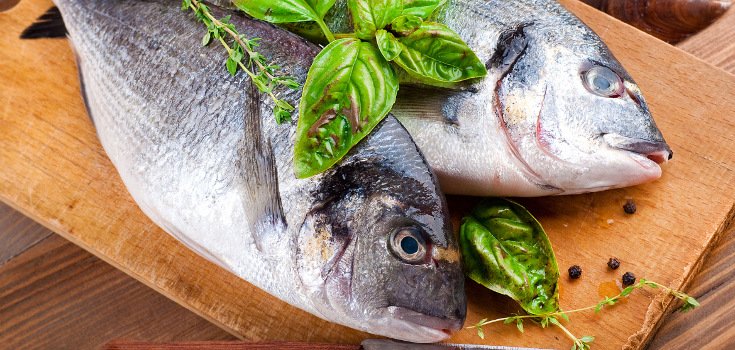This Key Mineral Naturally Protects Against Heavy Metal Toxicity

Do you enjoy eating fish, but worry about the mercury? Several research studies are showing that most seafood is high in selenium, and selenium purifies the body of mercury. This suggests that ocean fish can be eaten with confidence.
Research published this month from the University of Hawaii Medical School went to the core of this issue by analyzing selenium and mercury levels in the placentas of a cohort of women in relation to their seafood intake during pregnancy.
Researchers found that when taken as a group, those who consumed no fish exhibited the lowest mercury levels. But there were many women who either had higher mercury with no fish consumption or lower mercury with high fish consumption. This led them to conclude that no correlation between eating fish and higher mercury levels could be drawn.
A study published earlier this year also investigated the mercury-selenium connection in Zebra Fish. Adult fish were exposed to mercury with and without selenium. Lower levels of mercury were found in the fish fed mercury and selenium compared to those fed only mercury. In addition, the elimination of mercury from muscle was significantly greater in the fish fed the diet containing selenium. Researchers concluded that dietary selenium reduces the accumulation and enhances the elimination of mercury.
Even though mercury is frequently found in highly desirable large species of fish, the more important factor to think about is the relative amount of selenium the fish contains. Types of fish and other seafood having a high selenium to mercury ratio can remove the threat of mercury toxicity.
Selenium is an essential trace mineral, required in the body in only minuscule amounts. It is a known cancer fighter through its ability to boost immunity and promote detoxification of not only mercury but other heavy metals as well.
How to Know Which Fish Have a Good Ratio of Selenium to Mercury
Last month, the Western Pacific Regional Fishery Management Council, one of eight such councils in the US, presented a new standard for valuing fish titled Selenium in Ocean Fish Protects Against Mercury. It says:
“Regardless of the amount of mercury in fish, if the selenium level is higher, the fish is safe to eat…All of our popular ocean fish are an excellent source of health promoting selenium as well as high quality protein and omega-3 fatty acids…Our favorite fish are more likely to protect against mercury toxicity, than to cause it.”
The organization has published a chart depicting graphs of the amount of selenium and mercury in each of 15 commonly eaten fish. Thirteen of the fish have a much higher ratio of selenium to mercury, making them safe to eat. The only one with a lower ratio is the Mako Shark. Swordfish has an equal ratio of selenium to mercury.
A study from the National Oceanic and Atmospheric Administration has shown that southern Flounder, Tuna, and Wild Pacific Salmon such as Sockeye and Coho also have a good ratio of selenium to mercury.
This is good news for anyone contemplating having a child because about 30 percent of the fat found in the developing brain is composed of long chain fatty acids, the fatty acid group that includes DHA and EPA. These are the omega-3 fatty acids found predominantly in fish.
Omega-3s are essential to neurological development and the fulfillment of cognitive potential as well as visual acuity in infants and children. In adults, DHA has been shown to support electrical signaling and cellular communication, resulting in improved memory, mental processing facility, and learning.
Many people, including those who don’t eat fish, have high levels of mercury in their body from vaccines, dental amalgams, food dyes, thermometers, and other sources. Mercury competes with trace minerals for access to cellular receptors, and it can infiltrate and contaminate cells by shutting down their energy production and antioxidant enzyme systems.
This makes getting enough daily selenium an imperative. If you don’t eat fish, go for three Brazil nuts everyday for optimal selenium.

so we are now supposed to believe in the miracle of selenium as the cure for all poisons in seafood? I agree with “zombie” that there are so many poisonous things in our oceans and rivers and lakes now that we are only safe if we don’t eat fish. I haven’t had any since the BP Gulf spill, except when I can occasionally find wild salmon!
if its good for fish, its good for us too, here are some good food sources for Selenium:
Brazil Nuts. Without a doubt, Brazil nuts are one of the best sources of selenium! …
Shiitake/White Button Mushroom. …
Lima/Pinto Beans. …
Chia Seeds. …
Brown Rice. …
Seeds (Sunflower, Sesame, and Flax) …
Broccoli, Cabbage, Spinach.
Is my understanding that one Brazil Nut a week is sufficient to meet our needs and that you can overdose on Selenium if you not careful. The suggestion of 3 brazil nuts a day seems excessive. I would suggest people research this before taking too many Brazil nuts.
This is false information,mercury in fish will kill you if the toxidity is high enough,there is no antidote for this type of poisoning. She is making many assumtions on a limited amount of facts and studies that don’t expressly state the mercury in fish or fowl is no longer harmful.
Maybe the author works for the same department to discredit science that Monsanto has?